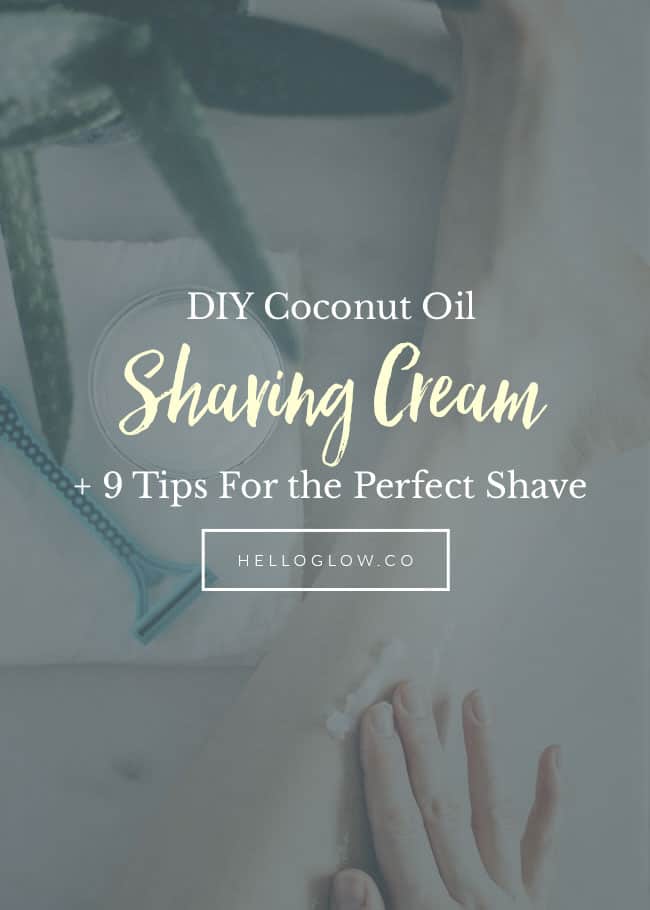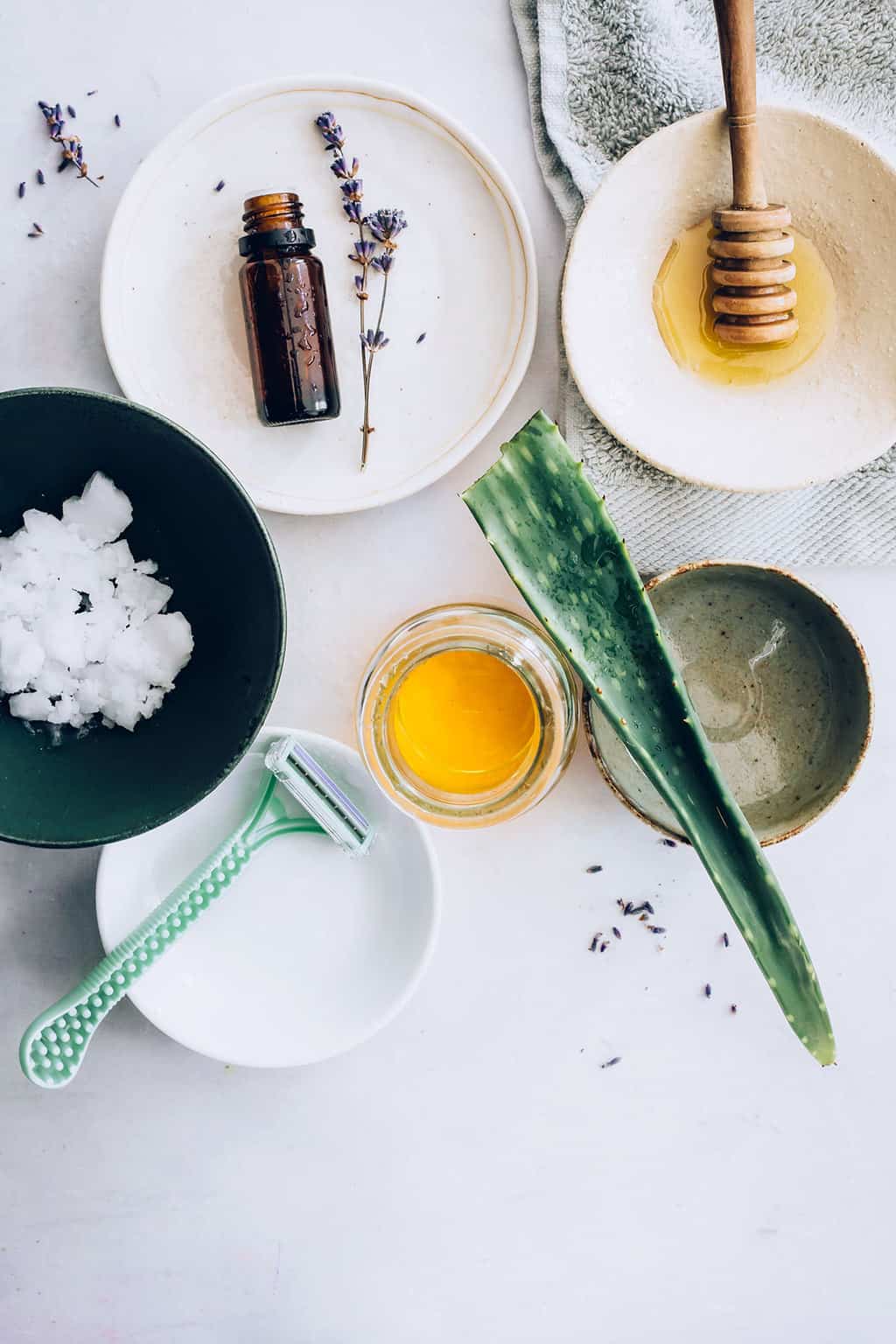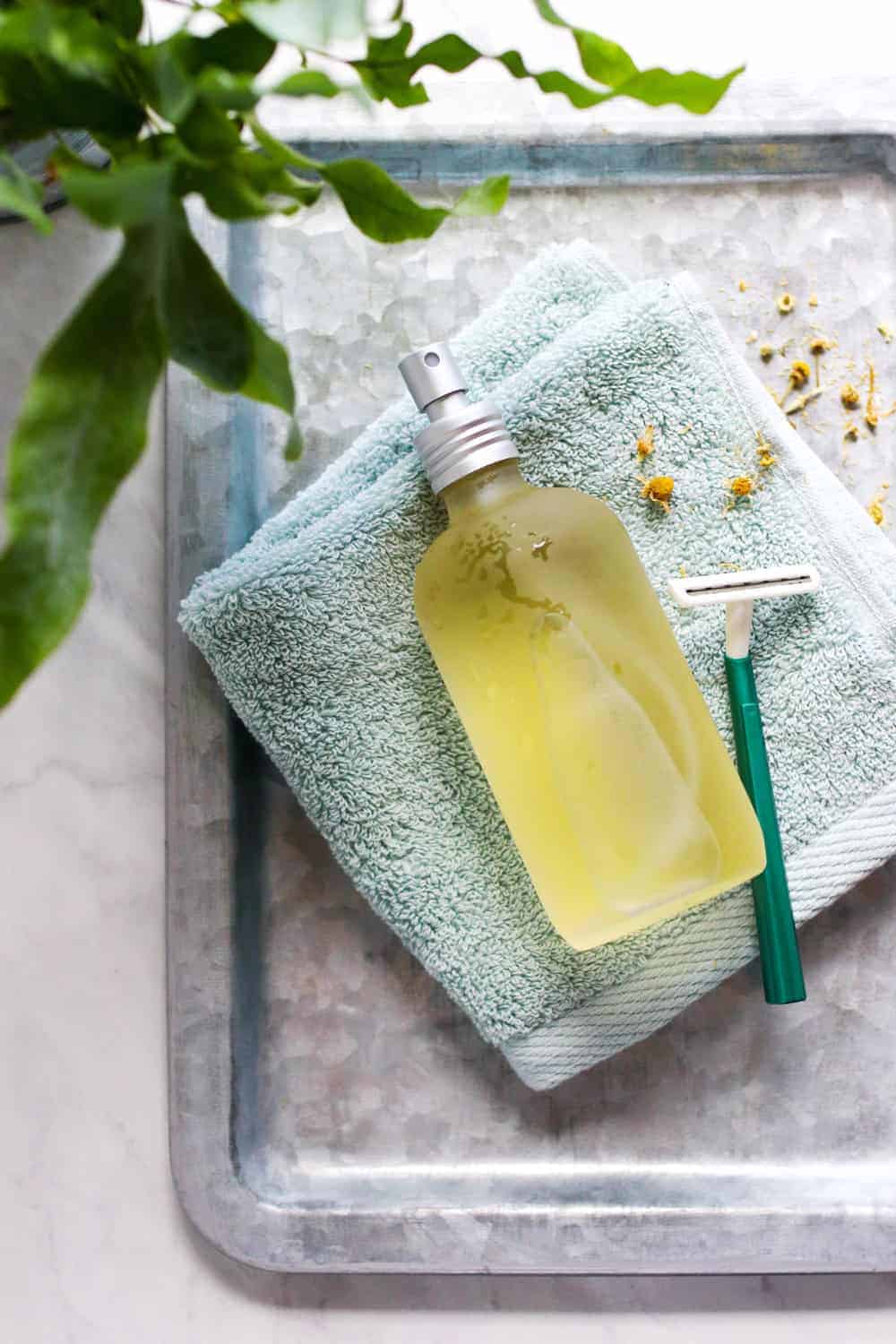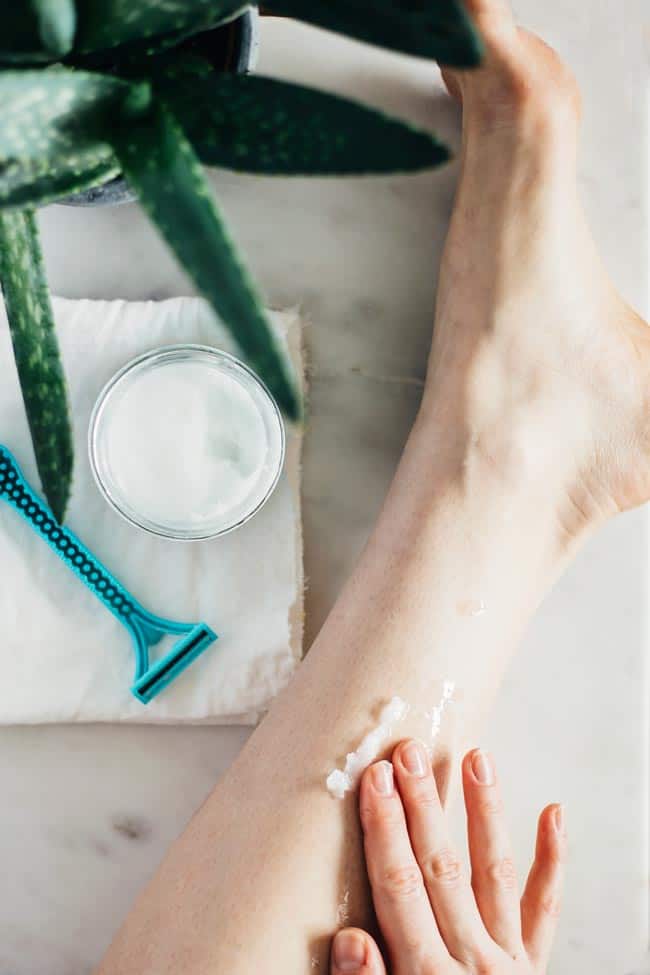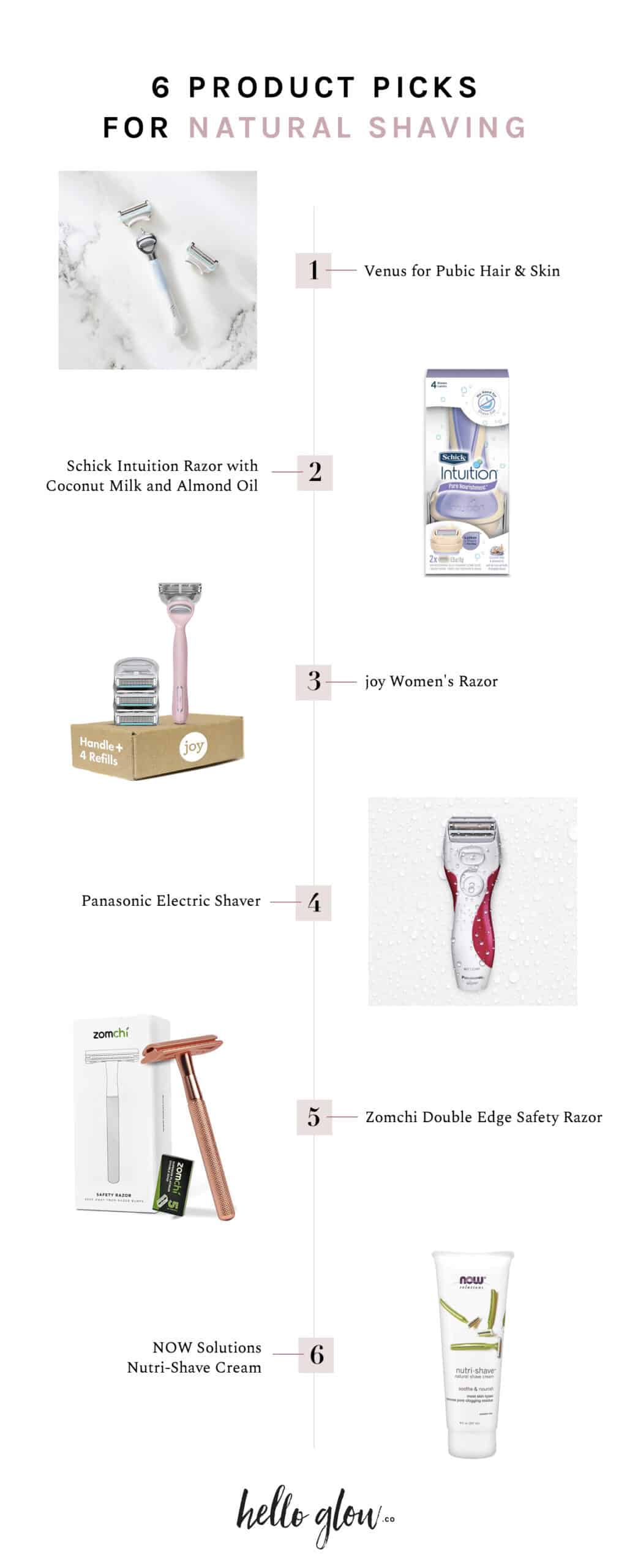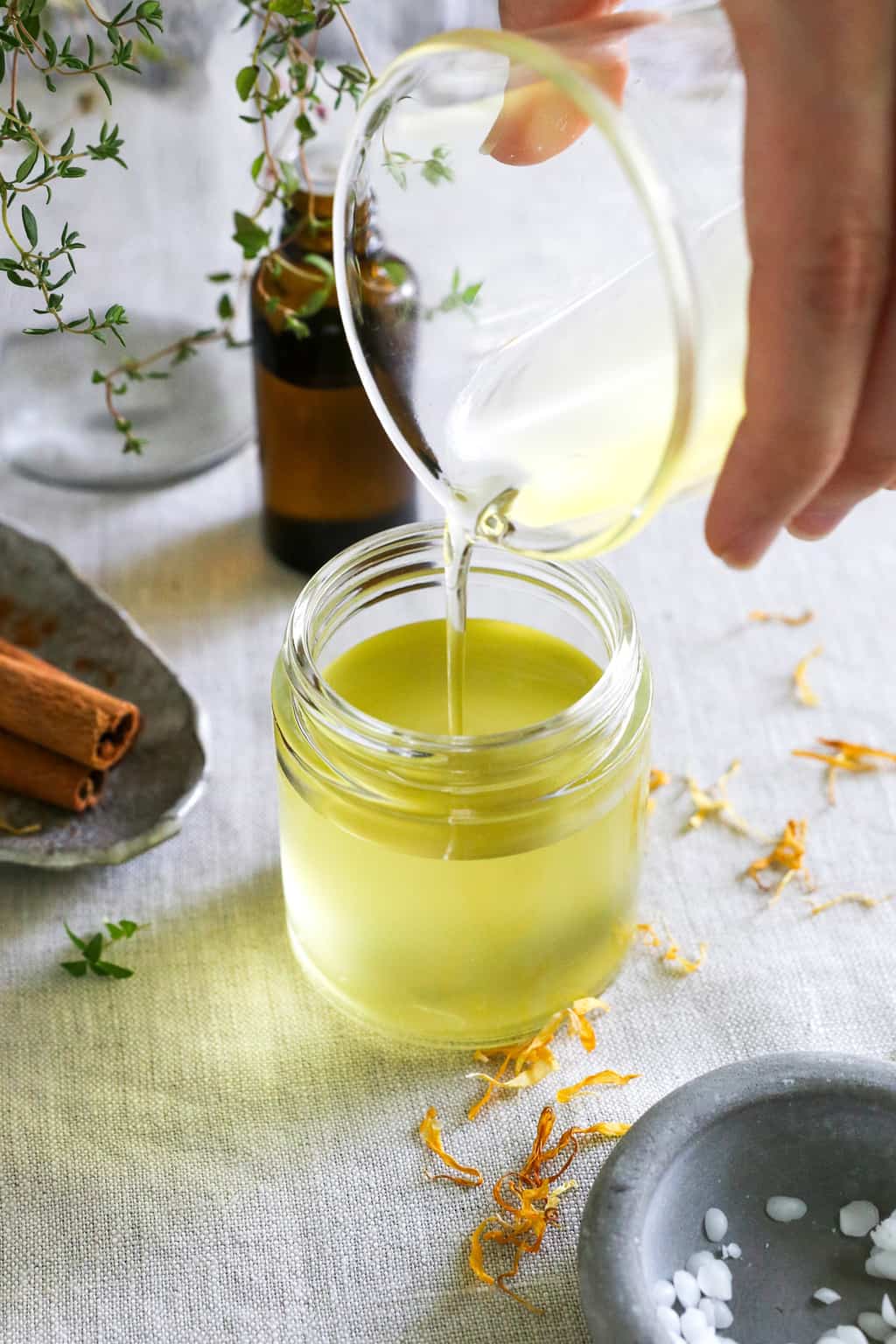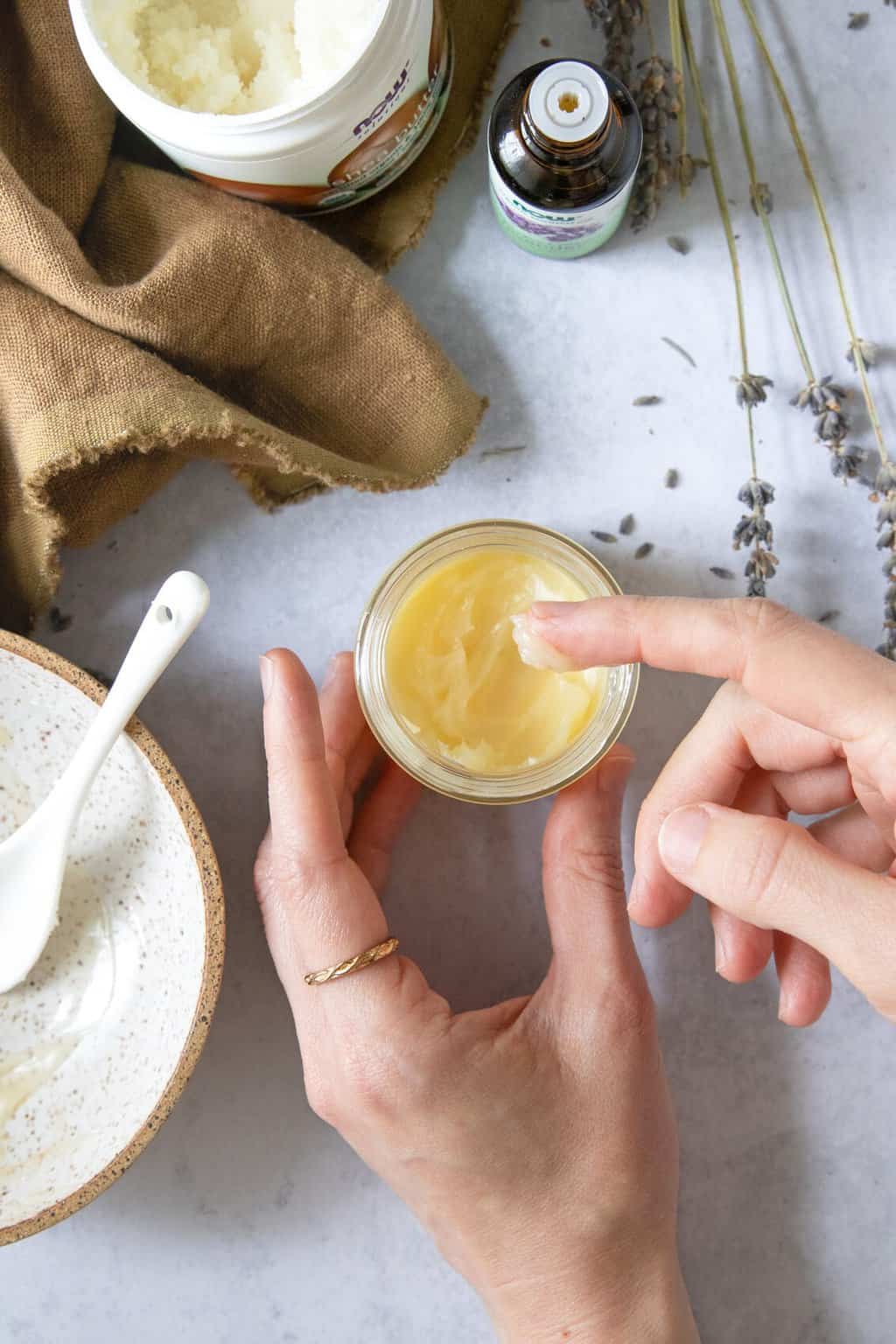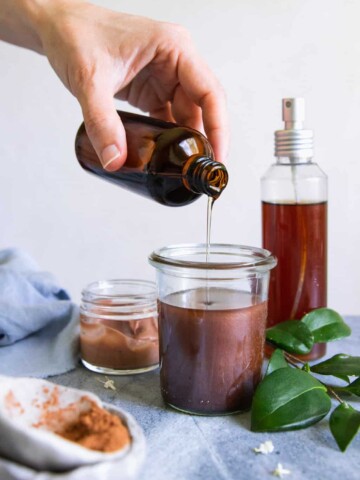Good shaving technique is important because dry legs are more prone to irritation and razor burn. While just fixing your shaving mistakes can help you get smooth, soft skin every time, we wanted to up the ante by making our own super-nourishing coconut oil shaving cream. No surprise, we loved it!
How to Shave Your Legs—9 Tips for the Perfect Shave!
Here's a recipe for homemade shaving cream, along with 9 tips for getting the perfect shave.
1. Start with the Right Tools
A good razor is essential. Toss that old, dull one you've been using, and replace it with one that has multiple blades. Grab a gentle exfoliating scrub (skip the loofah as they carry a lot of terrible bacteria that can introduce infection [source]) and your shaving cream, and head to the shower or bath.
How often should you switch out your razor blade? If it’s any more than 10 shaves, then you’re using an old, dull, and potentially infectious blade. For legs we like the Schick Intuition Razor with Coconut Milk and Almond Oil. It's infused with coconut milk and almond oil to lather, moisturize, and shave at the same time.
2. Soften Skin in Warm Water
Open pores mean a closer shave. So save the shaving for last, and wash your hair while you let the warm water soften your skin first. You'll get a closer shave and prevent razor burn.
3. Exfoliate Before Shaving
Take a few extra minutes to exfoliate before you shave. A quick scrub will get rid of dead skin and help clear away pore blockages that could lead to ingrown hairs. Use a sanitized exfoliator or one of these fall body scrubs to slough off dry skin.
Exfoliating, whether by chemical or manual methods, can help slough off and loosen dead skin cells in the area you’re shaving. This makes the formation of razor bumps less likely.
A good exfoliator to use before shaving is Glytone Exfoliating Body Wash, which is glycolic acid-based, so it can help chemically exfoliate the skin pre-shave.
Just note that exfoliating can be hard on skin, so make sure and do it gently, so you don’t stir up skin inflammation, and then wait a few minutes before shaving. Also, I don't recommend doing it after you shave—moisturizing is best [source].
4. Use a Moisturizing Shaving Cream
After you exfoliate, apply this DIY moisture-rich shaving cream to soften the hair.
Coconut oil shaving cream
—¼ cup aloe vera gel (you can also use a natural conditioner if you don't have aloe vera)
—¼ cup fractionated coconut oil (you can use regular coconut oil, but fractionated coconut oil won't harden in cooler temperatures)
—4–6 drops essential oil, such as peppermint, tea tree, or lavender
—1 tablespoon Castile soap, optional if you'd like to have it suds up a bit
Instructions
1. Melt the coconut oil and combine it with the aloe. Stir it together and store in a plastic container.
2. Add the essential oil of your choice to the mixture. Peppermint will give a cooling sensation, lavender is soothing, and tea tree is a good antiseptic if you cut yourself [source].
3. If coconut oil hardens or separates between uses, put the container under the shower stream before shaving to warm it up.
4. Apply a thin layer to the skin, and let it sit a couple of minutes before shaving.
5. Store leftover shaving cream in the bathroom for up to 2 months.
Why it works
The aloe will soften hair and act as an anti-inflammatory [source], while the coconut oil moisturizes skin, helping to prevent razor burn and skin irritation. They are both known to have antibacterial effects, which help to prevent skin infections.
5. Use the right shave technique
You have a new razor (right??), your hair is soft, and the pores are open—you're ready to shave! And I wish someone had told me this earlier, but it's all about technique. Here are a few shaving tips for the smoothest legs imaginable:
1. Bend your knee slightly and gently pull the skin taut.
2. Let up on the pressure. Shaving with too much pressure causes skin irritation [source]. Try to keep it light and gentle. Glide the razor lightly over skin, going with the direction of hair growth. As any skincare expert will tell you, it’s vital that you always shave in the same direction that your hair grows.
3. Avoid shaving the same area too much. Shaving the same area over and over just leads to cuts, razor burn, and irritation [source]. If you're having to shave multiple times, then it's time to replace your razor blade.
4. Be careful over thin-skin areas like the ankles, backs of knees, and shins. These are extra prone to cuts and bumps.
5. Stay warm. Shaving over goosebumps makes for an uneven surface where cutting each hair is complicated.
6. Rinse + Pat
Rinse with cool water, and pat dry with a soft towel. Don't rub; that will irritate skin.
7. Apply Moisturizer
Even though our coconut oil shaving cream is pretty moisturizing, if you have dry skin, it's best to apply a gentle moisturizer after toweling off. Soft, well-moisturized skin will also go a long way in helping prevent razor bumps.
A simple body oil is perfect for applying post-shave for soothing skin and locking in moisture [source]. Try adding 6–10 drops of anti-inflammatory sandalwood essential oil to an ounce of light oil, like grapeseed or sweet almond, for a quick aftershave balm.
Wait at least 30 minutes before applying scented lotions, deodorants, or sunscreen. Your skin is very sensitive after shaving, so it’s important to leave the skin alone for a bit.
Some lotions can make the sting worse, so consider applying a ceramide-based moisturizer to help rebuild the skin barrier function, like Ceramedx Restoring Body Lotion, which is fragrance-free and contains both ceramides and hyaluronic acid to hydrate skin. Switch to a heavier moisturizer in winter, or just slather yourself in coconut oil.
8. Soothe Razor Burn and Bumps
Also known as ingrown hairs, razor bumps are pimple-like spots around the hair follicles that often occur with shaving. Topical applications to help calm the skin can be helpful.
Aloe vera is the perfect antidote to the dreaded red bumps. Apply aloe vera or this cooling razor burn spray to any rashes for instant cooling, soothing relief.
Just don't try to pick them out with a tweezer, as that can quickly lead to an infection and scarring. Instead, continue with gentle exfoliation and moisturizing to help loosen the trapped hair.
9. Slow Down Hair Growth
Continue to gently exfoliate between shaving to slow the rate of new hair growth.
Avoid These Common Shaving Mistakes
Shaving as soon as you get in the shower
Moisten the skin for at least 3 minutes before applying your shave cream. Heat helps to soften the hair and relax hair follicles. Hydrating the hair shaft before shaving causes it to swell and prevents the sharp edges that end up causing razor bumps [source], so shaving your legs last is your best bet.
Not changing your razor
Shaving is naturally hard on skin. Not only are nicks and cuts par for the course, but open, damaged hair follicles are a hotbed for bacteria. To prevent infection, irritation, and inflammation, switch out your razor blade regularly. It becomes an old, dull, and potentially infectious razor blade after about 10 shaves.
Using water to shave
Ever wonder why men lather up a good shave cream before busting out the razor? You'll notice a difference when using a good homemade shaving cream rather than just water. It makes the whole process so much easier on skin! You'll get fewer nicks and cuts, and it’s extra moisturizing, which is just what skin needs when shaving.
The only time I get razor burn is when I'm in a hurry and try to shave with just water. And boy, do I regret it later!
Shaving in the wrong direction
If you have sensitive skin, try shaving your legs in downward strokes with the grain. Shaving against the grain causes the sharp tip of the cut hair to retract into the follicle—a set-up for forming ingrown hairs [source].
Not letting your razor dry
Letting your razor dry out between showers does a couple of things. For starters, it keeps bacteria from taking up residence between the blades. Second, sitting in water dulls and oxidizes (rusts!) the razor, making it more prone to cause irritation.
Rinse your razor well and carefully dry it off with a clean, dry towel after every use. Then put it somewhere out of the way where it won't get splashed and will be dry for next time.
Picking
Picking at ingrown hairs can quickly lead to an infection and scarring. Use an ingrown hair scrub to gently exfoliate and help loosen the trapped hair.
For the occasional bump that begins to itch, to keep you from scratching and making it worse, you can apply over-the-counter hydrocortisone ointment for 1–2 days to minimize inflammation. But it’s best to explore natural remedies for preventing ingrown hairs if they become a regular problem.
Shaving every day
Shaving every day isn't necessary. Usually, the hair doesn’t grow back that fast, and shaving removes a layer of skin cells each and every time, which takes a toll on your skin.
Shaving less often has also been associated with a decrease in ingrown hairs [source]. For most, it’s better to shave once or twice a week during pool season and even less often during the winter.
Shaving FAQs
Will placing a warm towel over my legs for a couple of minutes help open my pores even further?
I swear by the ol' spa warm towel trick for softening skin and opening pores on the face, so it will probably do the same for your legs. Just remember, you don't want the towel to be so hot that it burns you. As long as it's warm enough to create steam, it should do the trick.
Can I use fresh aloe vera gel in my shaving cream?
Yes, you can, but fresh aloe vera has a short shelf life. You'll need to store your shaving cream in the refrigerator and use within 2–3 days to keep it from growing mold.
Even after using shaving cream, I still get ingrown hairs. Any tips?
Ingrown hairs are tricky little buggers, aren't they? If the above tips still don't get you the gams of your dreams, this post is full of tricks for tackling razor bumps of all kinds.
I've had problems with coconut oil causing breakouts. Will this make razor burn or ingrown hairs worse for me?
It's true that coconut oil can have a tendency to be comedogenic (causing breakouts) for some people due to the type of fats it contains [source]. If you've had trouble with coconut oil causing breakouts in the past, I recommend using a pure oil from a high-quality brand such as Dr. Bronner's. It's the only brand I use on my face since it doesn't wreck my skin, and it should be great for legs as well.
Why aren't my legs totally smooth after shaving?
When it comes to shaving, the closer you can get to the hair root, the smoother your legs will be. That means exfoliating, using a sharp razor, and taming post-shave irritation every single time.
But if you're still battling stubble, you might want to give sugar waxing a try. We cover the ins and outs of making your own sugar wax at home in this post.
Why does my skin sting after shaving?
Razor burn is most often caused by dry shaving or using an old razor. Many of the tips we mentioned earlier, such as replacing your razor often, letting the warm water soften skin, and using a moisture-rich shaving cream, can help prevent razor burn.
Will applying body oil after shaving clog my pores?
No, it shouldn't! Just make sure to choose a non-comedogenic oil, like jojoba, sweet almond, or safflower oil.
Will shaving make my tan fade faster?
Nope, that's an old wives' tale. Tanning takes place in the deeper layers of skin, so even if shaving removes the outermost layer of skin cells, the layers underneath will still retain some color.
Is it okay to shave without water if I'm in a hurry?
Dry shaving is okay in a pinch—so don't make it a habit. Shaving without water is a surefire way to end up with ingrown hairs [source], razor burn, and a heckuva lot of nicks.
Natural Shaving Picks
Best for bikini line: Venus for Pubic Hair & Skin This razor’s double blades remove hair with minimal skin contact to minimize irritation in your most sensitive spots.
Best for legs: Schick Intuition Razor with Coconut Milk and Almond Oil
This razor is infused with coconut milk and almond oil to lather and moisturize, leaving your legs smooth and allowing for a precise shave.
Best for underarms: joy Women's Razor
The (pink!) non-slip handle is perfect for harder-to-reach areas, such as your underarms—and bonus points for the five super sharp blades.
Best electric: Panasonic Electric Shaver
The three ultra-sharp blades closely follow the contour of your skin, whether you're shaving your legs, underarms, or other areas.
Best safety razor: Zomchi Double Edge Safety Razor
For an environmentally friendly shave, opt for safety razors. This one offers a really close shave and doesn't cause rashes or dark spots.
Shaving cream: NOW Solutions Nutri-Shave Cream
For smooth, nourished, healthy skin, this all-natural shaving cream is soothing and protective, ideal for sensitive areas.
This post was medically reviewed by Dr. Jennifer Haley, a board-certified dermatologist with extensive experience in medical, cosmetic, and surgical dermatology. Learn more about Hello Glow’s medical reviewers here. As always, this is not personal medical advice, and we recommend that you talk with your doctor.
514
